There is a director's cut of a 215-minute superhero movie, which has long been hailed as the best film in history. The director is Zack Snyder, who is familiar to everyone. So what's so good about it? Why has it become Zark's must-be-mentioned work? Today, let's look back and follow me to dismantle the classic title sequence of "Watchmen."

Although the director's cut of "Watchmen" is three hours and 35 minutes long, it does not waste a single shot, and even in the opening minutes, it pushes the atmosphere to a climax. Most superhero movies adjust the opening logo style according to the actual content. As a 2009 work, "Watchmen" has a great title sequence design, starting with bright yellow and then Warner Bros.'s logo.

There is no music or background sound until the DC logo appears, and the sharp and ear-piercing background sound, like boiling water in a kettle, begins to set off the tense atmosphere.

Then there is a yellow happy face, accompanied by the sound of TV reports. In this movie, the sound and picture are frequently out of sync.

Here, the scene constructed through picture and sound information is Comedian's residence.

Zack Snyder is best at frequently using radio, television, newspapers, websites, posters, and other media in superhero movies to assist, supplement and complete the narrative. On the one hand, he can use these media to introduce the background of the events more naturally. On the other hand, it also makes the pictures more visually attractive.

At this point, Comedian goes to the TV, and two things can be seen on the background wall: guns and a woman, and a suspected genital ornament beside the TV. Based on the foregone information, we don't yet have an idea about this cigar-smoking man, but through the accumulation of background details, we can infer what kind of person he may be.
Why is "Watchmen" good? Many people will mention the film's "reproduction" of the comics, but an in-depth analysis will show that the whole five-minute opening is only about a dozen panels of the first three pages of the comics. The film uses different times in the same space to complete the reorganization of events and plenty of background information. Therefore, it is not accurate to say that the film is a reproduction of the comics.

If you know more about modern historical events, when you hear the Soviet Union and Afghanistan mentioned on TV, it is not difficult to judge that the film may take place between 1979 and 1989. The TV also mentions Richard Nixon. What? A president who had to resign as early as 1974 because of the Watergate scandal is still president. The boundary between reality and fantasy is broken at this moment.

Similarly, the Doomsday Clock is a real object still in use today. Any time-related props appearing in this film are not only to tell you what time it is but also advance time and events, as well as the completion of the "last-second rescue" mode in the end.

Talking here, I want to ask a question. How many superheroes have appeared so far? The correct answer is three, one is Comedian, one is Silk Spectre, and the last one is Doctor Manhattan. It also paves the way for his superpowers.

In the scene with the remote control, the combination of a pistol and a woman appear again. The woman appears in the famous pornographic magazine "HUSTLER." And the pistol with a happy face logo is a "1911 automatic pistol." Comedian's real name, Edward Blake, is on one side of it, and "Nixon 1970" is on the other.


So far, these recurring details show how interesting Comedian is and make the audience's interest and curiosity progressive.

And then, the camera moves toward Room 3001, which not only introduces a new space and a new character but also relocates the space where the characters are. A fight is ready to break out, and the camera again moves to the pistol and the woman. It strengthens the information through a track-in, which involves the issue of so-called rationality.

Where the character's pistol came from is very clearly explained through the shots. This kind of narrative rationality was rare at that time. After clarifying the distance between the gun and the character, his series of actions in the face of crisis, including taking another puff of the cigar and emptying the water in the cup, are no longer just actions but a demonstration of the thinking process and part of the role shaping.

After Comedian breaks the door, the deliberate slow motion here is not a show-off but highlights the killer's speed on the contrary. He is standing in the doorway when the killer breaks in. When Comedian throws the cup, the killer dodges, then catches and smashes it on the door of 3001. Comedian rolls and raises his pistol, and the killer comes to the other side of the TV and controls Comedian's shooting.


This set of shots shows that Zack Snyder is a very thoughtful director. The close-up of the bullet shooting through the TV screen hides a clue about the Easter Eggs: Nostalgia/Veidt.

One of the funnier frames is behind the broken wall. You can see the word "medicine," which is an aphrodisiac. The photo to the left of the medicine bottle foreshadows the appearance of another Watchmen member.

As you know, Zark also belongs to the generation who grew up watching videos and DVDs. Many directors I like, such as Quentin, David Fincher, Nolan, and so on, are very keen to hide clues in the shots. The details that the general audience does not pay attention to at all, but they encourage them to watch repeatedly.

From gun fights, fist fights, to knife fights, accompanied by Nat King Cole's Unforgettable, Comedian finally says the famous line in "Watchmen:" It's a joke, it's all a joke. The "blood-stained happy face" imagery gradually takes shape in a track-in. Comedian is thrown out of the window, and the fall is so tragic that the yellow blood-stained happy face appears again, like a period, announcing Comedian's death.


This title sequence is one of the most famous sequences in superhero movies. It is rich, funny, and valuable. Structurally speaking, it is like a prologue, which narrates the concept, members, and background of Watchmen one by one with a high density of information.

Well, that's all for this article. The second half will share the three parts of the opening song of "Watchmen," as well as the characters, details, and Easter Eggs involved. Remember to keep following. The article next will be updated on my channel soon! Do you like the title sequence design of this movie? Welcome to leave a comment to discuss with me!














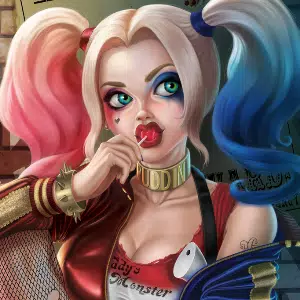

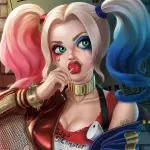











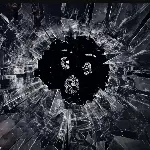




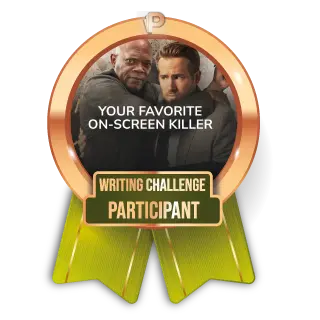








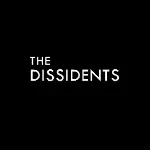








Share your thoughts!
Be the first to start the conversation.